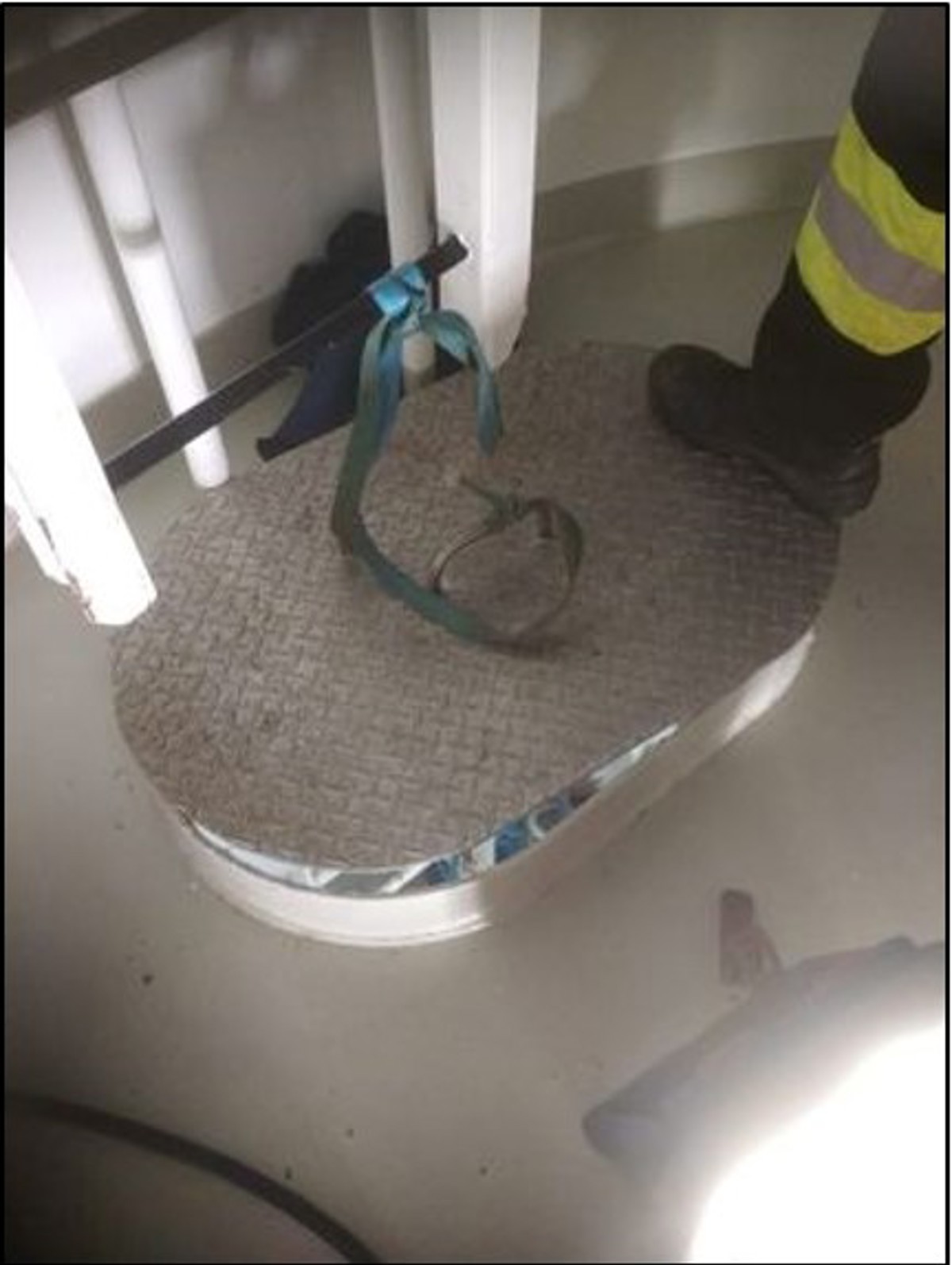LTI: Person fell down hatch inside crane pedestal
- Safety Flash
- Published on 10 January 2022
- Generated on 26 December 2025
- IMCA SF 01/22
- 2 minute read
Jump to:
Hatch cover fell into room below injuring an engineer during an inspection.
What happened?
Two service engineers where performing an inspection inside a offshore crane pedestal. Inside, there was a ladder running the full height of the crane pedestal, with a hatch on the middle level of the pedestal.
The first person went down the ladder, and unintentionally shifted the hatch cover into such a position, that when the second person went down the ladder and stepped onto the hatch cover that had shifted, it caused the hatch cover to tip over and fall to the room below. As a result the second service engineer fell through the hatch.
The engineer hurt his foot and back and had to rest for some weeks, although nothing was broken – only bruising.

What went wrong?
- The hatch cover shifted slightly out of position.
- There was a lack of awareness when entering crane pedestal.
What was the cause?
- Poor hatch cover design – cover not secured. It ought to not have been possible to leave the loose hatch in such a position.
Lessons/actions
- Test and check – in this case the cover plate was never fully tested to ensure sure it was safe for unintentional shifting when persons might step on the edges.
- Look for similar hatches – ensure all hatch covers are properly designed and secure to prevent unintentional opening or shifting.
Related Safety Flashes
-
IMCA SF 02/20
10 January 2020
-
-
IMCA SF 03/19
27 February 2019
-
IMCA SF 24/17
5 October 2017
-
-
IMCA SF 24/17
5 October 2017
-
-
IMCA SF 23/16
13 September 2016
IMCA Safety Flashes summarise key safety matters and incidents, allowing lessons to be more easily learnt for the benefit of the entire offshore industry.
The effectiveness of the IMCA Safety Flash system depends on the industry sharing information and so avoiding repeat incidents. Incidents are classified according to IOGP's Life Saving Rules.
All information is anonymised or sanitised, as appropriate, and warnings for graphic content included where possible.
IMCA makes every effort to ensure both the accuracy and reliability of the information shared, but is not be liable for any guidance and/or recommendation and/or statement herein contained.
The information contained in this document does not fulfil or replace any individual's or Member's legal, regulatory or other duties or obligations in respect of their operations. Individuals and Members remain solely responsible for the safe, lawful and proper conduct of their operations.
Share your safety incidents with IMCA online. Sign-up to receive Safety Flashes straight to your email.